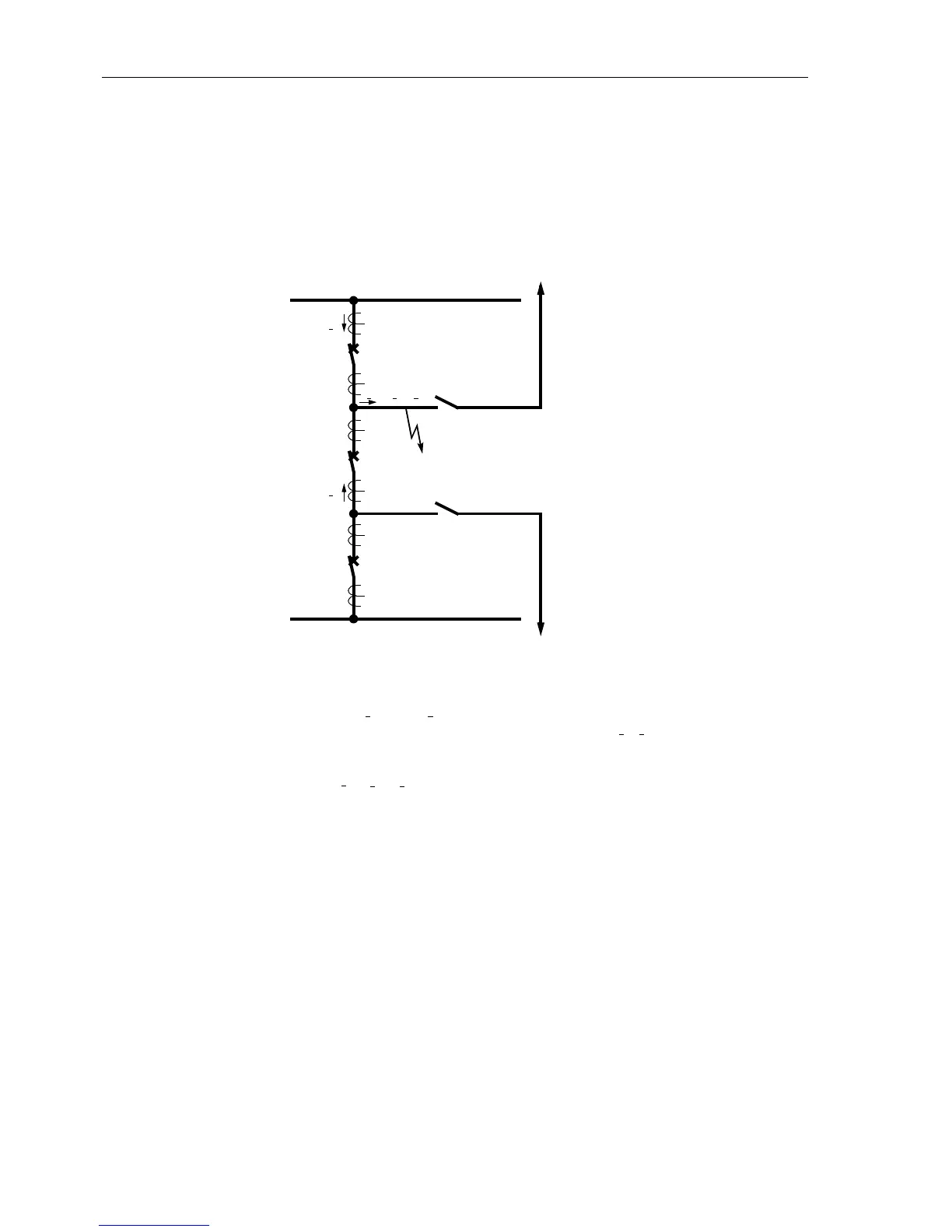Functions
6-166 7SA6 Manual
C53000-G1176-C156-2
Stub Protection A further overcurrent stage is the stub protection. It can however also be used as a
normal additional definite time overcurrent stage, as it functions independent of the
other stages.
A stub fault is a short-circuit located between the current transformer set and the line
isolator. It is of particular importance with the 1
1
/
2
–circuit breaker arrangement (Figure
6-93).
Figure 6-93 Stub fault at an 1
1
/
2
–circuit breaker arrangement
If a fault current I
A
and/or I
B
flows while the line isolator 1 is open, this implies that a
fault in the stub range between the current transformers
I
A
, I
B
,andthelineisolatorex-
ists. The circuit breakers CBA and CBC which carry fault current may be tripped with-
out delay.The two sets of current transformers are connected in parallel such that the
current sum
I
F
= I
A
+ I
B
represents the current flowing towards the line isolator.
Thestubprotectionisanovercurrentprotectionwhichisonlyinservicewhenthestate
of the line isolator indicates the open condition via a binary input “
>I-STUB ENABLE”.
The binary input must therefore be operated via an auxiliary contact of the isolator. In
the case of a closed line isolator, the stub protection is out of service. Figure 6-94
shows the logic diagram.
If the stub protection stage is to be used as a normal definite time overcurrent stage,
the binary input “
>BLOCK I-STUB”, should be left without allocation or routing (ma-
trix).Theenableinput“
>I-STUB ENABLE”, however, has to be constantly activated
(either via a binary input or via integrated logic (CFC) functions which can be config-
ured by the user.
Busbar A
busbar B
feeder 1feeder 2
stub fault
I
A
I
B
I
F
= I
A
+I
B
line isolator 1
line isolator 2
CBA
CBB
CBC

